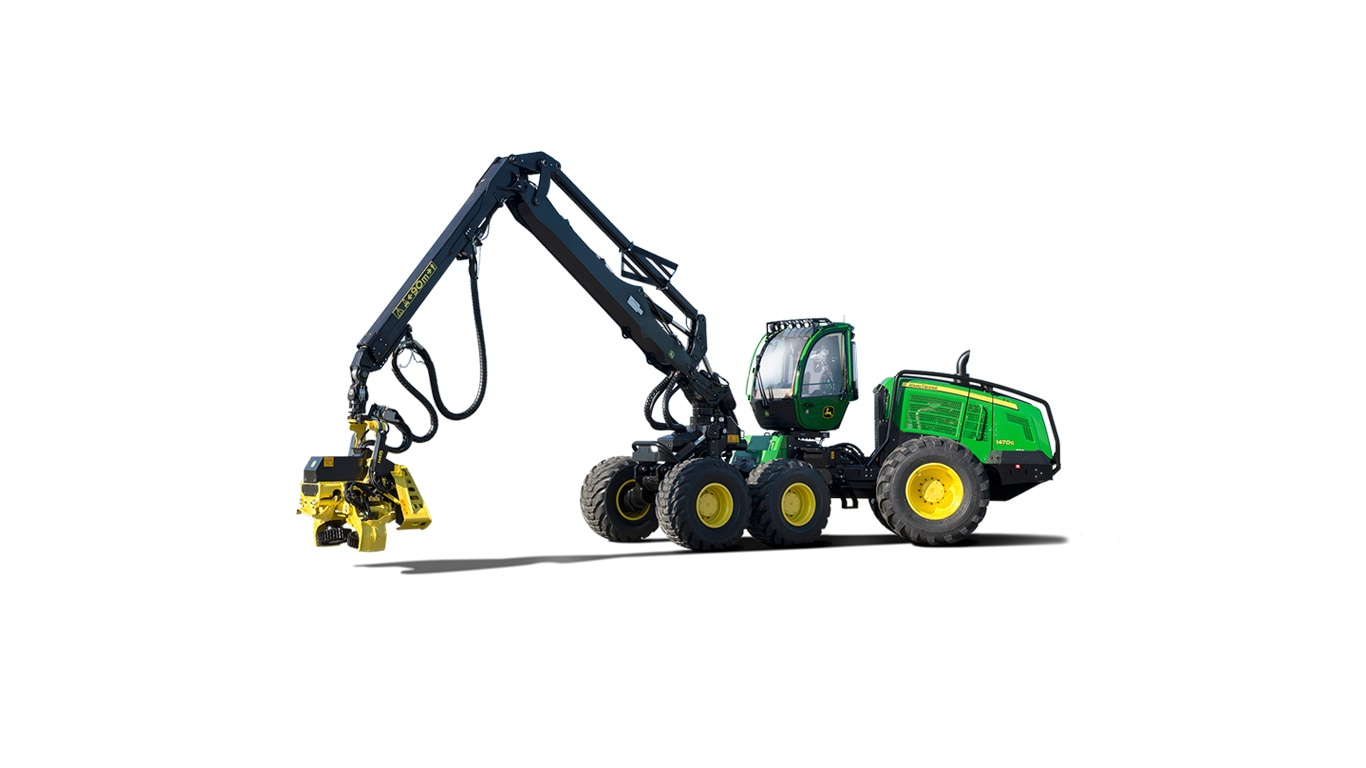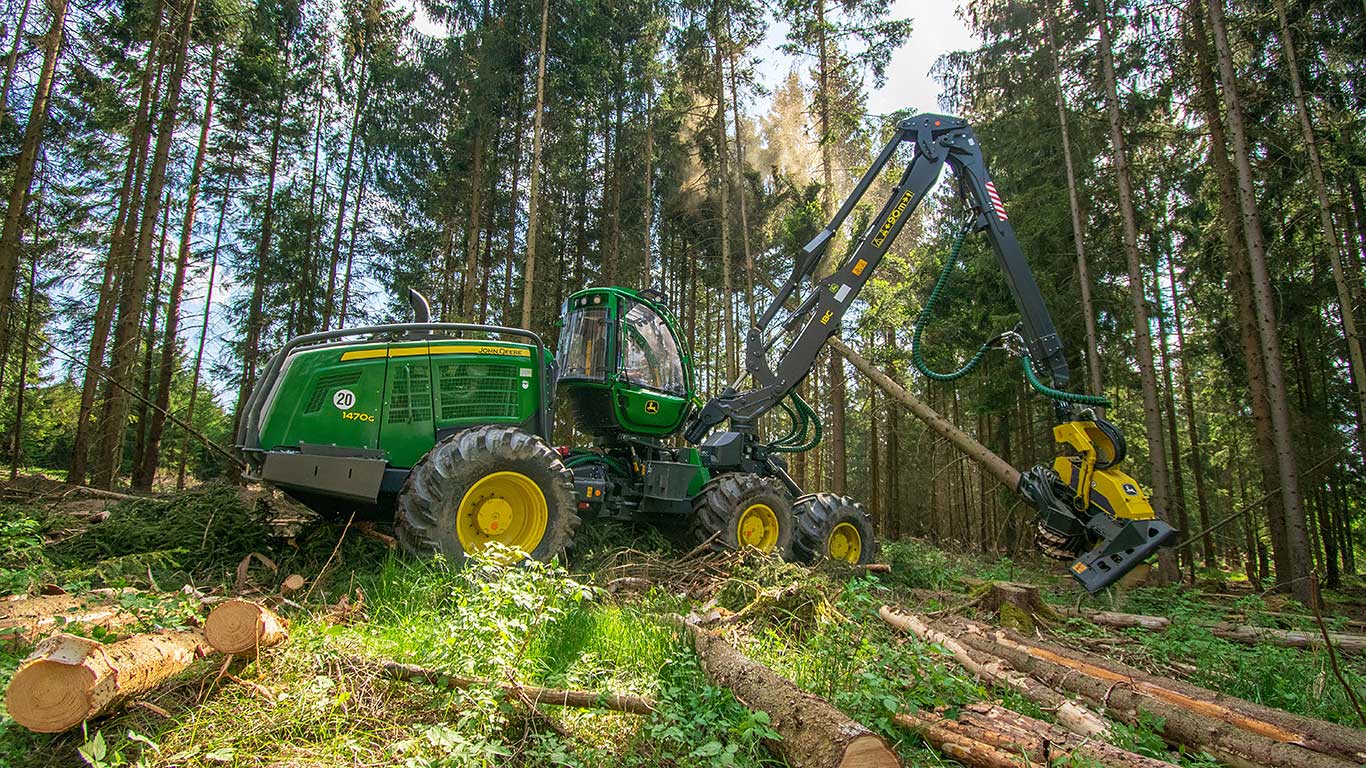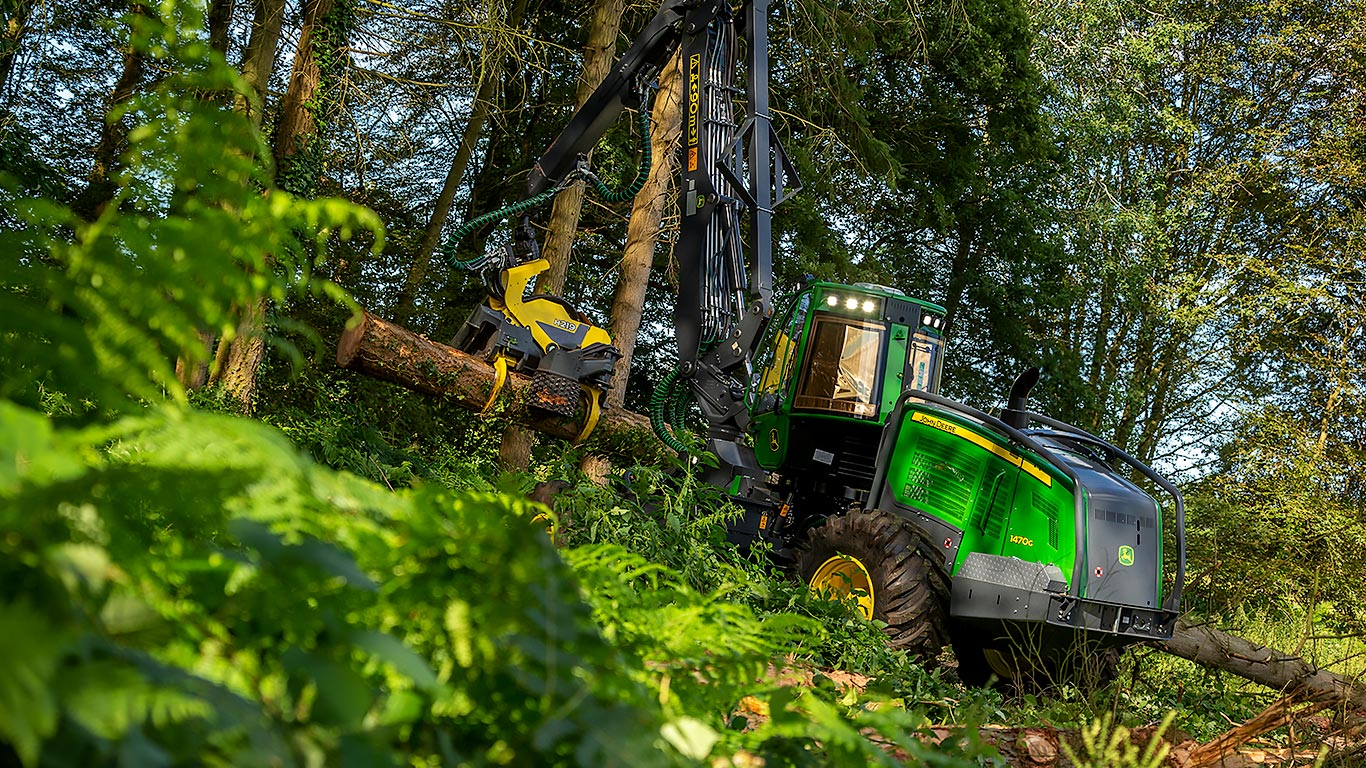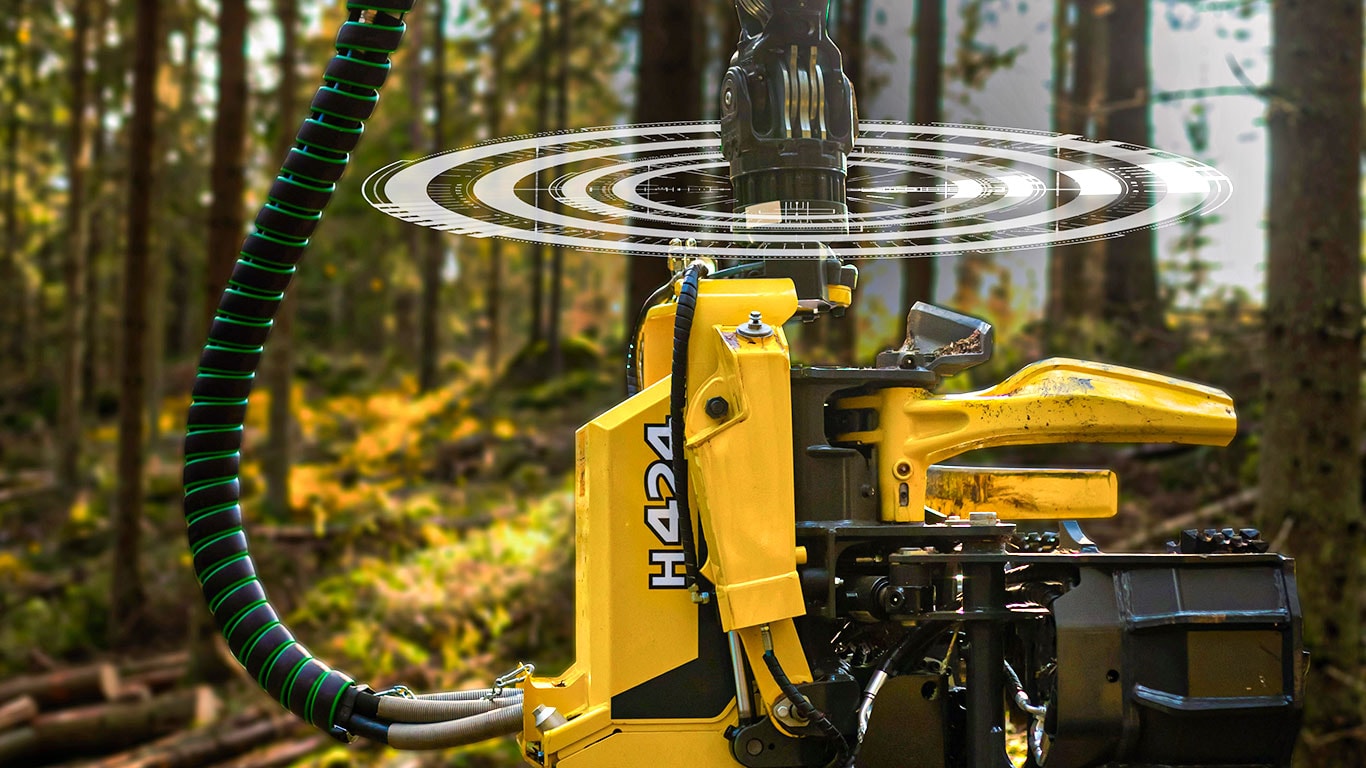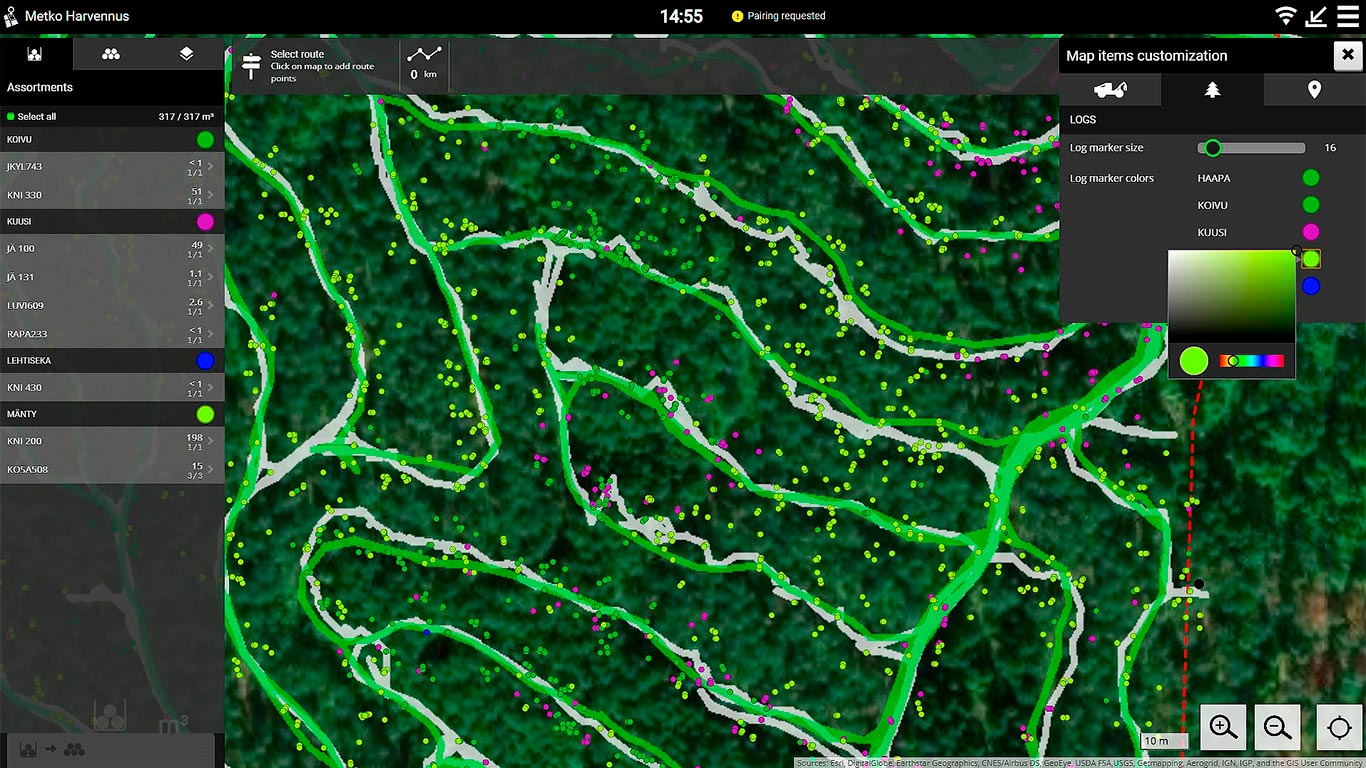Maintenance and Support
You May Also Be Interested In
1470G Wheeled Harvesters
- Powerful and fuel efficient
- Strong and accurate harvester heads
- Harvester boom CH9
- Comfortable working environment
Over-rotation prevention protects against hose damage.
Over-rotation prevention is available for 1270G and 1470G harvesters with IBC 3.0 and H424 or H425/H425HD harvester head.
TimberMatic Maps gives operators a real-time production view to the logging site.
The data collected by the harvester’s sensors and the precise GPS-based location of the felled timber, is automatically transmitted from the harvester to the TimberMatic Maps application for use by the forwarder operator.
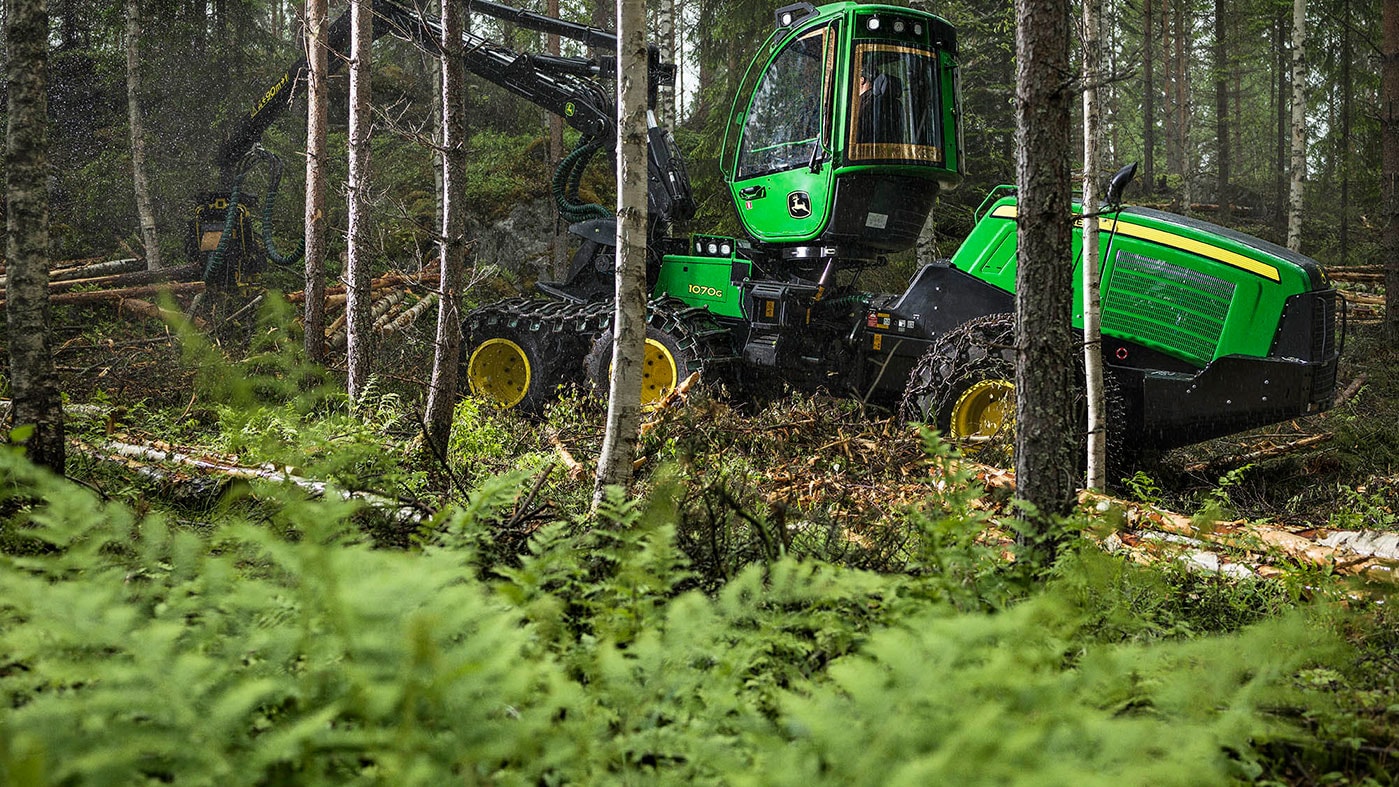
Product program
Product Program wheeled cut-to-length
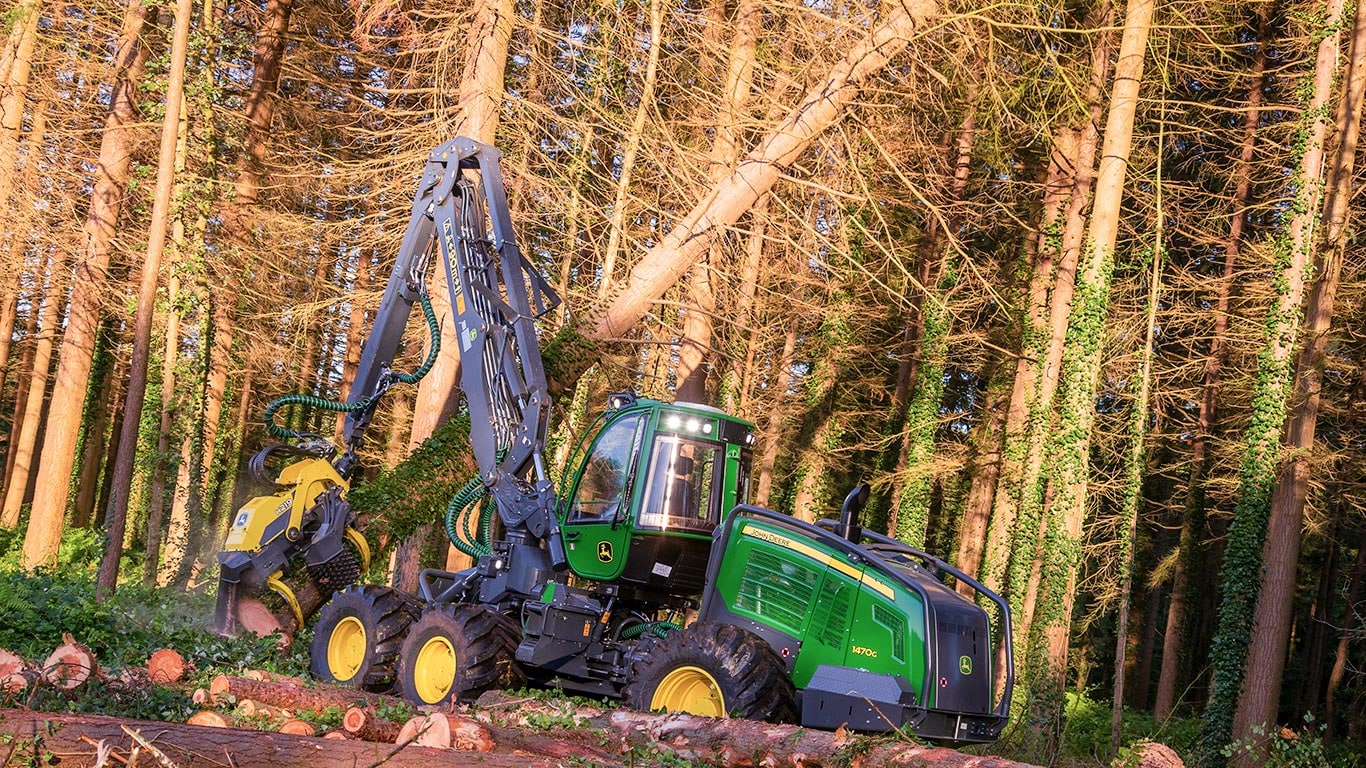
Effortless power
1470G harvester's CH9 boom's path and speed are excellent, and the boom works effortlessly also when fully extended. The boom's slewing cylinders have been positioned parallel to the harvester's frame, thus improving the hosing and cabling. This also brings better forward visibility and minimizes wear and tear.
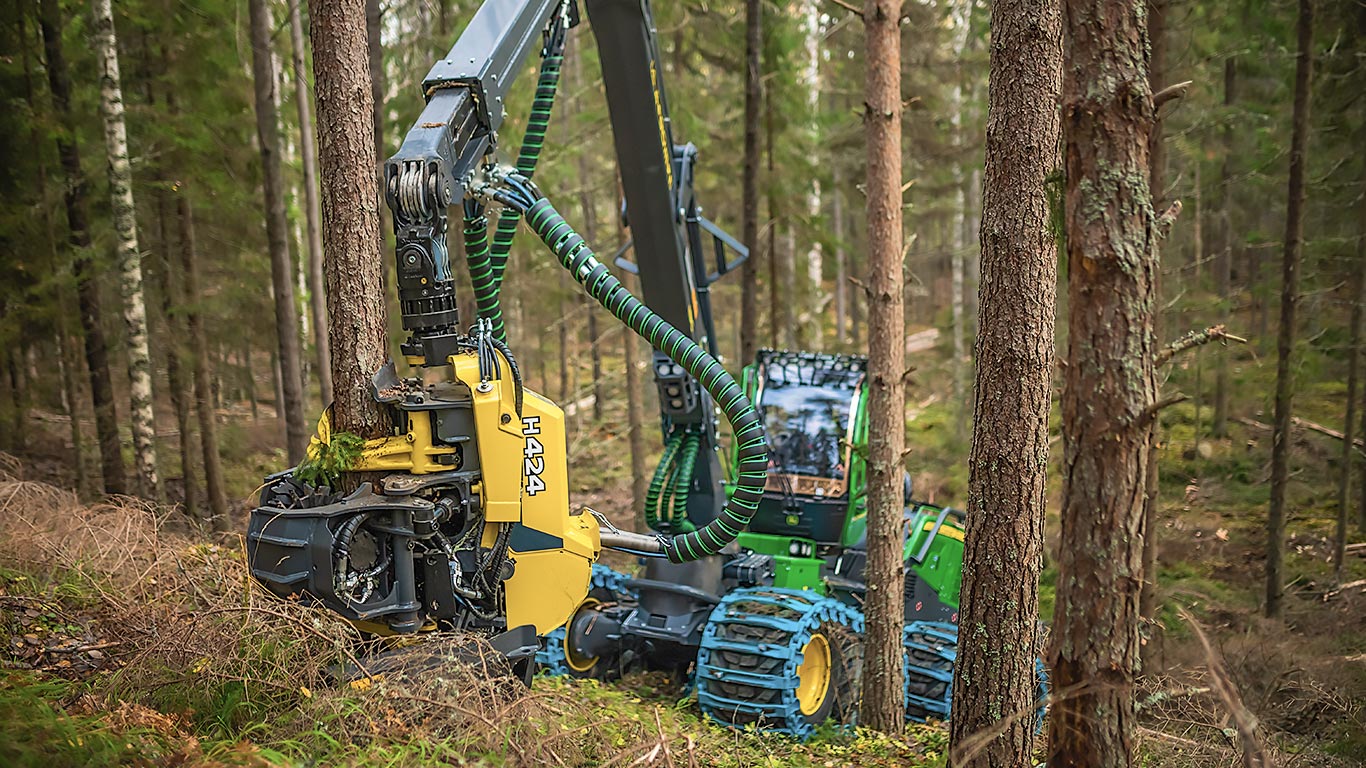
Harvester heads
John Deere harvester heads are known for their productivity, reliability and especially accuracy. The harvester heads have efficient feeding and delimbing.

